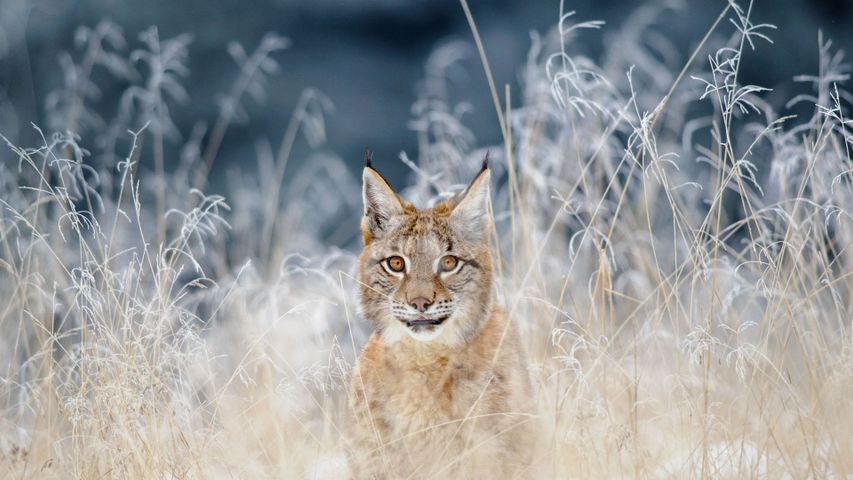Caracal cubs
© Marion Vollborn/Minden Picture
Yes, we see the family resemblance.... Siblings Day
Make the most of this family photo—caracals tend to go solo as adults, so these cute cubs will hang out together only until they've honed their hunting skills from watching mom. In the meantime, we think they make ideal mascots for Siblings Day, celebrated in Canada and the U.S. on April 10.
Fully grown caracals are trim and sleek, with long legs for speed and springs inside (not really) to help them leap as high as three metres to catch birds midflight. They're incredibly stealthy—they even have stiff fur on the pads of their feet to quiet their steps. It’s not surprising that they’re also known as the desert lynx, as they are the fastest—and largest—of the small cats in Africa, but they're only distantly related to actual lynx. Caracals' short coat is a gorgeous gold, but it’s those distinctive face markings and ear tufts that give them character (in fact, ‘caracal’ is a Turkish word that means ‘black-eared’). There’s debate in the wildlife community about the purpose of the tufts. Some believe they enhance the cats’ hearing or help camouflage the caracal in the dry areas of Africa, India, and the Middle East they call home; others think tuft twitching is a way to communicate.
Throughout history the caracal has been prized for its skill at leaping high to pluck birds out of the air and catching small game, such as mongooses, rodents, and monkeys—even a stray impala or small kudu. Indian and Chinese rulers used them for hunting and bestowed them as gifts. In recent years, caracal numbers have been dropping, largely due to agricultural encroachment on their habitat. Caracals will kill livestock if they’re hungry, and of course farmers and ranchers object, often with shotguns. On the plus side, caracals do keep small grass-eating critters under control, which leaves more pasture for livestock to eat. For the sake of these charismatic cats, we're rooting for peaceful coexistence.
Related Images
Bing Today Images




 Vancouver Coastal Sea wolves in Great Bear Rainforest, British Columbia, Canada
Vancouver Coastal Sea wolves in Great Bear Rainforest, British Columbia, Canada
 Tiger siblings in Jim Corbett National Park, Uttarakhand, India
Tiger siblings in Jim Corbett National Park, Uttarakhand, India
 A young jaguar on a riverbank, Pantanal, Brazil
A young jaguar on a riverbank, Pantanal, Brazil
 Eurasian lynx in the snow
Eurasian lynx in the snow
 Puma in Torres del Paine National Park, Patagonia, Chile
Puma in Torres del Paine National Park, Patagonia, Chile
 Red squirrels in Cairngorms National Park, Highlands, Scotland
Red squirrels in Cairngorms National Park, Highlands, Scotland
 Clouded leopard
Clouded leopard
 Eurasian lynx in the Bohemian-Moravian Highlands of the Czech Republic
Eurasian lynx in the Bohemian-Moravian Highlands of the Czech Republic


